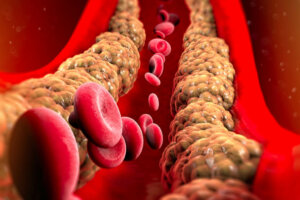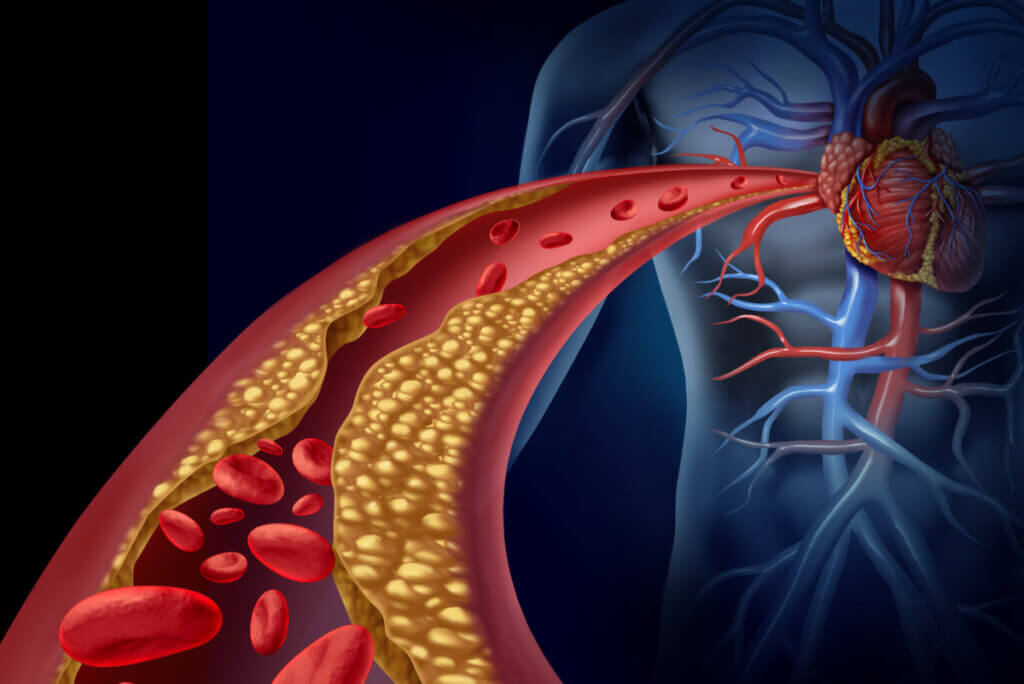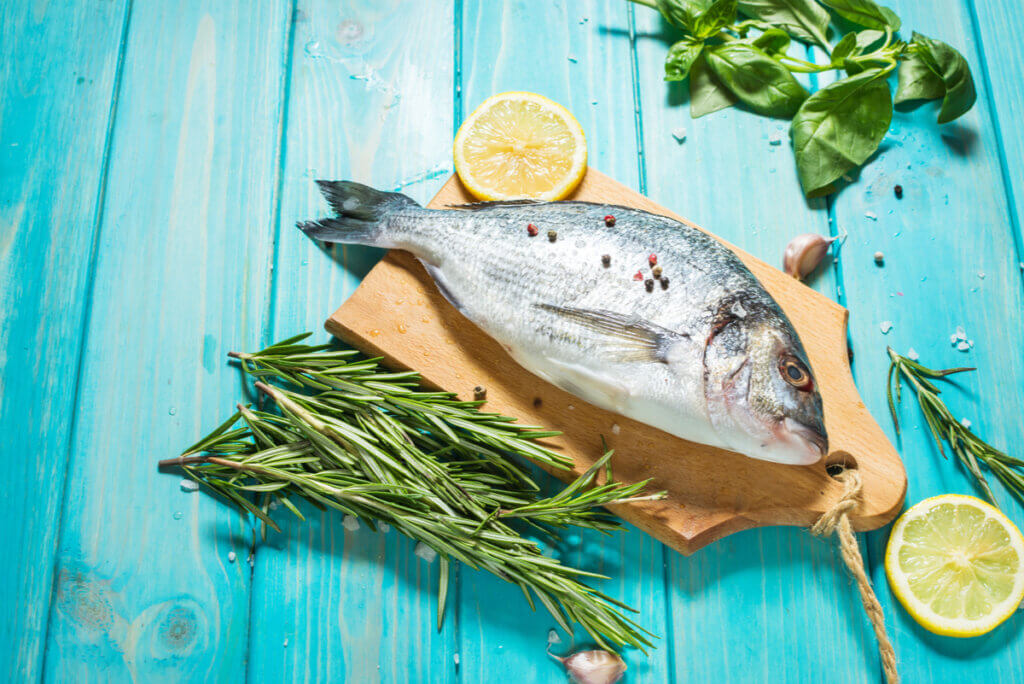The Different Types of Cholesterol


Escrito y verificado por el nutricionista Saúl Sánchez
The name cholesterol refers to a large number of lipoproteins present in the blood. They’re responsible for the transport of lipids and are classified into various types. These elements are necessary for the proper functioning of the body, despite their bad reputation.
For many years, a high cholesterol level was associated with an increase in cardiovascular risk. However, this parameter is a very nonspecific marker and the association isn’t as clear as previously believed.
The different types of cholesterol
Next, we’re going to talk about the different types of lipoproteins that can be found in the blood, as well as their functions.
HDL cholesterol
HDL cholesterol is what we refer to as good cholesterol. These are high-density lipoproteins that carry fat from tissues to the liver. A high number of these elements in the blood is associated with a lower risk of cardiovascular disease, according to a study published in the journal Circulation Research.
Under normal conditions, a healthy diet causes an increase in the concentration of HDL cholesterol in the blood. Also, practicing sports on a regular basis can trigger a similar response. Either way, the impact is limited, since the levels are marked by genetic determination.
LDL cholesterol
This is traditionally known as bad cholesterol or low-density lipoprotein. It transports lipids from the liver to the tissues.
For many years, the presence of high concentrations of these lipoproteins has been associated with an increased risk of atherosclerosis. However, current evidence suggests that such a relationship is uncertain. This is pointed out by a study published in the journal Nutrients.
According to the most recent research, the mechanisms involved in cardiovascular risk are oxidation and inflammation. When both appear in excess, the risk of developing atherosclerosis increases due to an aggregation of lipids present in the blood. However, under conditions of homeostasis, keeping LDL levels elevated isn’t considered dangerous.
Likewise, it’s important to note that diet can influence the amount of LDL lipoproteins, but in a limited way. The regular intake of unsaturated fatty acids, such as those of the omega 3 series, could slightly decrease the number of these elements, according to research published in the European Journal of Nutrition.
However, the effects of healthy fatty acids on cholesterol levels are more significant when they’re excessively high. As a general rule, the genetic determination causes there to usually be an equilibrium between the endogenous production of lipoproteins and dietary consumption.

VLDL
VLSD cholesterol refers to very low-density lipoproteins. They’re divided into oxidized and non-oxidized. This first subgroup could be the real culprit for the increase in cardiovascular risk.
According to a study published in the journal Current Medicinal Chemistry, oxidized lipoproteins are mainly responsible for atherosclerosis, which causes serious cardiovascular problems. These types of elements increase in number when lifestyle and diet are unhealthy.
For example, the regular consumption of trans fatty acids has been shown to increase the risk of developing atheroma plaques. This is because these lipids have inflammatory properties.
In any case, the value of VLDL lipoproteins isn’t reflected in most blood tests, nor is their rate of oxidation.
Triglycerides
Triglycerides are not properly one of the types of cholesterol, but they’re usually analyzed together. They’re a better marker in terms of cardiovascular disease. In fact, experts recommend that the concentration of these substances not increase above the healthy ranges.
It should be noted that it’s possible for cholesterol to reach levels below those recommended, while triglycerides are well above. The interpretation of these contexts isn’t easy.
However, in a situation of excess triglycerides in the blood, a dietary intervention is usually recommended. These elements respond in a more satisfactory way to a change in diet than cholesterol.
Weight loss, decreasing the consumption of fried and ultra-processed foods, and the restriction of simple sugars usually translate into a significant decrease in blood triglyceride levels. If these elements are accompanied by the practice of physical activity on a regular basis, the results improve even more.
What’s the influence of diet on the different types of cholesterol?
For many years, the weekly intake of fats, eggs, and other products was limited in order to keep cholesterol levels under control. The purpose was to improve health status and reduce cardiovascular risk. However, current evidence doesn’t support this theory. In fact, it suggests that a low-fat diet could be counterproductive.
The most recent trials state that the intake of dietary cholesterol or cis-type fats has little influence on the levels of lipoproteins in the blood. Higher consumption of these elements would only produce a decrease in their endogenous synthesis.
However, there’s a type of dietary lipid that could negatively influence the concentration of lipoproteins. We’ve already mentioned them, and they’re trans fatty acids. However, the effect isn’t as significant on total cholesterol levels as on the rate of oxidation of the lipoproteins themselves.
By promoting healthy lifestyle habits, it’s possible to achieve a much more adequate lipid profile. This doesn’t always translate into a decrease in HDL or LDL levels but, rather, in a decrease in inflammation and oxidation in the internal environment.
To achieve this objective, it’s essential that you’re sure to consume fresh food, especially vegetables, on a regular basis. These foods have phytonutrients with an antioxidant and anti-inflammatory nature. Also, oily fish, raw vegetable oils, and oily fruits are considered positive.
At the same time, it’s essential that you practice physical exercise on a regular basis. Physical activity not only improves the lipid profile but also increases the efficiency of the heart and blood vessels when performing their functions.

Supplements to control cholesterol level
In addition to paying attention to lifestyle habits, there are some dietary supplements that could positively impact the lipid profile. An example of this is curcumin products. This phytonutrient is present in turmeric and its consumption is associated with an improvement in health.
In general, the consumption of culinary spices can help prevent cardiovascular problems and help prevent pathologies, such as type 2 diabetes. But in addition, it’s always a good idea to maintain a good state of body composition.
Being overweight and obese has been shown to alter normal cholesterol levels. In addition, this condition produces an increase in systemic inflammation, which can lead to greater oxidation of the VLDL fractions.
Cholesterol: The different types of lipoproteins necessary for the body
A fairly large number of lipoproteins that transport fats through the blood are known by the name of cholesterol. Its presence in the body is necessary to ensure good health.
However, what’s really decisive is to ensure that the levels of systemic oxidation and inflammation are under control. This way, the incidence of atherosclerosis is reduced and blood lipids are less likely to form plaques that condition blood flow.
To achieve an effective decrease of cardiovascular risk, it’s essential that you follow a healthy diet that prioritizes fresh foods over industrial ultra-processed foods. Likewise, you need to practice physical activity on a regular basis.
The name cholesterol refers to a large number of lipoproteins present in the blood. They’re responsible for the transport of lipids and are classified into various types. These elements are necessary for the proper functioning of the body, despite their bad reputation.
For many years, a high cholesterol level was associated with an increase in cardiovascular risk. However, this parameter is a very nonspecific marker and the association isn’t as clear as previously believed.
The different types of cholesterol
Next, we’re going to talk about the different types of lipoproteins that can be found in the blood, as well as their functions.
HDL cholesterol
HDL cholesterol is what we refer to as good cholesterol. These are high-density lipoproteins that carry fat from tissues to the liver. A high number of these elements in the blood is associated with a lower risk of cardiovascular disease, according to a study published in the journal Circulation Research.
Under normal conditions, a healthy diet causes an increase in the concentration of HDL cholesterol in the blood. Also, practicing sports on a regular basis can trigger a similar response. Either way, the impact is limited, since the levels are marked by genetic determination.
LDL cholesterol
This is traditionally known as bad cholesterol or low-density lipoprotein. It transports lipids from the liver to the tissues.
For many years, the presence of high concentrations of these lipoproteins has been associated with an increased risk of atherosclerosis. However, current evidence suggests that such a relationship is uncertain. This is pointed out by a study published in the journal Nutrients.
According to the most recent research, the mechanisms involved in cardiovascular risk are oxidation and inflammation. When both appear in excess, the risk of developing atherosclerosis increases due to an aggregation of lipids present in the blood. However, under conditions of homeostasis, keeping LDL levels elevated isn’t considered dangerous.
Likewise, it’s important to note that diet can influence the amount of LDL lipoproteins, but in a limited way. The regular intake of unsaturated fatty acids, such as those of the omega 3 series, could slightly decrease the number of these elements, according to research published in the European Journal of Nutrition.
However, the effects of healthy fatty acids on cholesterol levels are more significant when they’re excessively high. As a general rule, the genetic determination causes there to usually be an equilibrium between the endogenous production of lipoproteins and dietary consumption.

VLDL
VLSD cholesterol refers to very low-density lipoproteins. They’re divided into oxidized and non-oxidized. This first subgroup could be the real culprit for the increase in cardiovascular risk.
According to a study published in the journal Current Medicinal Chemistry, oxidized lipoproteins are mainly responsible for atherosclerosis, which causes serious cardiovascular problems. These types of elements increase in number when lifestyle and diet are unhealthy.
For example, the regular consumption of trans fatty acids has been shown to increase the risk of developing atheroma plaques. This is because these lipids have inflammatory properties.
In any case, the value of VLDL lipoproteins isn’t reflected in most blood tests, nor is their rate of oxidation.
Triglycerides
Triglycerides are not properly one of the types of cholesterol, but they’re usually analyzed together. They’re a better marker in terms of cardiovascular disease. In fact, experts recommend that the concentration of these substances not increase above the healthy ranges.
It should be noted that it’s possible for cholesterol to reach levels below those recommended, while triglycerides are well above. The interpretation of these contexts isn’t easy.
However, in a situation of excess triglycerides in the blood, a dietary intervention is usually recommended. These elements respond in a more satisfactory way to a change in diet than cholesterol.
Weight loss, decreasing the consumption of fried and ultra-processed foods, and the restriction of simple sugars usually translate into a significant decrease in blood triglyceride levels. If these elements are accompanied by the practice of physical activity on a regular basis, the results improve even more.
What’s the influence of diet on the different types of cholesterol?
For many years, the weekly intake of fats, eggs, and other products was limited in order to keep cholesterol levels under control. The purpose was to improve health status and reduce cardiovascular risk. However, current evidence doesn’t support this theory. In fact, it suggests that a low-fat diet could be counterproductive.
The most recent trials state that the intake of dietary cholesterol or cis-type fats has little influence on the levels of lipoproteins in the blood. Higher consumption of these elements would only produce a decrease in their endogenous synthesis.
However, there’s a type of dietary lipid that could negatively influence the concentration of lipoproteins. We’ve already mentioned them, and they’re trans fatty acids. However, the effect isn’t as significant on total cholesterol levels as on the rate of oxidation of the lipoproteins themselves.
By promoting healthy lifestyle habits, it’s possible to achieve a much more adequate lipid profile. This doesn’t always translate into a decrease in HDL or LDL levels but, rather, in a decrease in inflammation and oxidation in the internal environment.
To achieve this objective, it’s essential that you’re sure to consume fresh food, especially vegetables, on a regular basis. These foods have phytonutrients with an antioxidant and anti-inflammatory nature. Also, oily fish, raw vegetable oils, and oily fruits are considered positive.
At the same time, it’s essential that you practice physical exercise on a regular basis. Physical activity not only improves the lipid profile but also increases the efficiency of the heart and blood vessels when performing their functions.

Supplements to control cholesterol level
In addition to paying attention to lifestyle habits, there are some dietary supplements that could positively impact the lipid profile. An example of this is curcumin products. This phytonutrient is present in turmeric and its consumption is associated with an improvement in health.
In general, the consumption of culinary spices can help prevent cardiovascular problems and help prevent pathologies, such as type 2 diabetes. But in addition, it’s always a good idea to maintain a good state of body composition.
Being overweight and obese has been shown to alter normal cholesterol levels. In addition, this condition produces an increase in systemic inflammation, which can lead to greater oxidation of the VLDL fractions.
Cholesterol: The different types of lipoproteins necessary for the body
A fairly large number of lipoproteins that transport fats through the blood are known by the name of cholesterol. Its presence in the body is necessary to ensure good health.
However, what’s really decisive is to ensure that the levels of systemic oxidation and inflammation are under control. This way, the incidence of atherosclerosis is reduced and blood lipids are less likely to form plaques that condition blood flow.
To achieve an effective decrease of cardiovascular risk, it’s essential that you follow a healthy diet that prioritizes fresh foods over industrial ultra-processed foods. Likewise, you need to practice physical activity on a regular basis.
- Ouimet M, Barrett TJ, Fisher EA. HDL and Reverse Cholesterol Transport. Circ Res. 2019 May 10;124(10):1505-1518. doi: 10.1161/CIRCRESAHA.119.312617. PMID: 31071007; PMCID: PMC6813799.
- Soliman GA. Dietary Cholesterol and the Lack of Evidence in Cardiovascular Disease. Nutrients. 2018 Jun 16;10(6):780. doi: 10.3390/nu10060780. PMID: 29914176; PMCID: PMC6024687.
- Blom WAM, Koppenol WP, Hiemstra H, Stojakovic T, Scharnagl H, Trautwein EA. A low-fat spread with added plant sterols and fish omega-3 fatty acids lowers serum triglyceride and LDL-cholesterol concentrations in individuals with modest hypercholesterolaemia and hypertriglyceridaemia. Eur J Nutr. 2019 Jun;58(4):1615-1624. doi: 10.1007/s00394-018-1706-1. Epub 2018 May 3. PMID: 29725824; PMCID: PMC6561982.
- Kattoor AJ, Kanuri SH, Mehta JL. Role of Ox-LDL and LOX-1 in Atherogenesis. Curr Med Chem. 2019;26(9):1693-1700. doi: 10.2174/0929867325666180508100950. PMID: 29737246.
- Islam MA, Amin MN, Siddiqui SA, Hossain MP, Sultana F, Kabir MR. Trans fatty acids and lipid profile: A serious risk factor to cardiovascular disease, cancer and diabetes. Diabetes Metab Syndr. 2019 Mar-Apr;13(2):1643-1647. doi: 10.1016/j.dsx.2019.03.033. Epub 2019 Mar 16. PMID: 31336535.
- Blesso CN, Fernandez ML. Dietary Cholesterol, Serum Lipids, and Heart Disease: Are Eggs Working for or Against You? Nutrients. 2018 Mar 29;10(4):426. doi: 10.3390/nu10040426. PMID: 29596318; PMCID: PMC5946211.
- Shabana, Shahid SU, Sarwar S. The abnormal lipid profile in obesity and coronary heart disease (CHD) in Pakistani subjects. Lipids Health Dis. 2020 Apr 14;19(1):73. doi: 10.1186/s12944-020-01248-0. PMID: 32290855; PMCID: PMC7158030.
Este texto se ofrece únicamente con propósitos informativos y no reemplaza la consulta con un profesional. Ante dudas, consulta a tu especialista.







